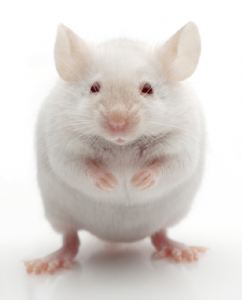The SAI Facility is able to accommodate animals with special needs for different studies.

The Small Animal Imaging Facility is able to handle various animals from within UNC’s DLAM facilities and from outside institutions. Here is how we deal with some of these situations.
Radioactive Animals
- The BRIC SAIF conducts many studies that use radioactive tracers and contrast agents which lead to the creation of animals that are “hot” for time periods from hours to weeks. Thanks to the support from UNC DLAM, these animals can be housed in a return cubicle in the Marsico Hall vivarium that is dedicated to radioactive animals. The SAIF and DLAM can maintain these animals until they reach a background level of radioactivity. This will greatly facilitate non-terminal longitudinal studies. If you are planning a survival imaging study that involves radioactivity, please contact us so that we can arrange for housing for your animals.
Biohazardous Animals
- Our facility is rated up to BSL2 and we have standard operating procedures for imaging and handling of animals with this classification. It is important to communicate with us prior to initiating your study so that we can familiarize you with our SOP on BSL2 animals, and schedule your study accordingly.
Non-UNC Animal Studies
- Studies from non-UNC institutions and companies can be conducted at the Small Animal Imaging Facility with appropriate paperwork and agreements. Animals can be imported to UNC after adequate review with UNC IACUC and DLAM. When contemplating a study that involves importing non-UNC animals it is important to remember that it is a process that takes time, planning, and communication. Make sure you contact us well before study initiation to ensure everything is in place for the animal transfer.
Large Animal Studies
- The BRIC is able to conduct imaging studies on large animals including cats, dogs, and swine. These imaging studies take place in our human imaging facility and are available for the following modalities: PET/CT, MRI, PET/MR. We have anesthesia and monitoring systems for large animals and DLAM veterinary technicians are enlisted to handle and maintain the animals throughout the study. Large animal studies are expensive so contact us to help maximize outcomes through in-vivo imaging.